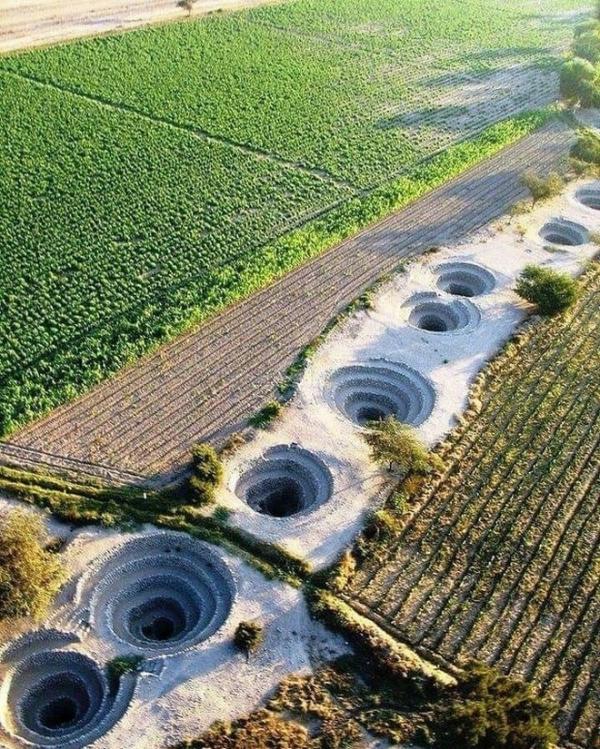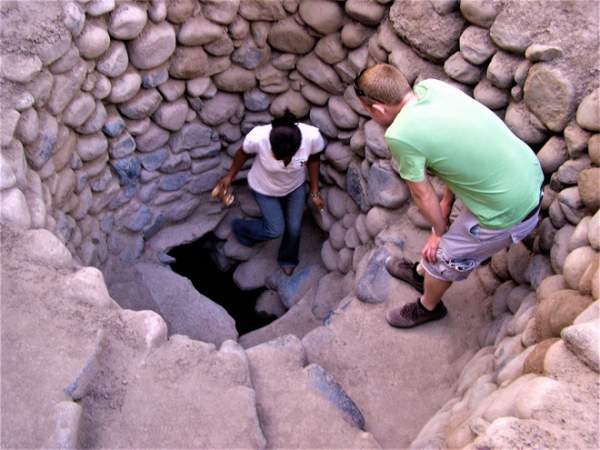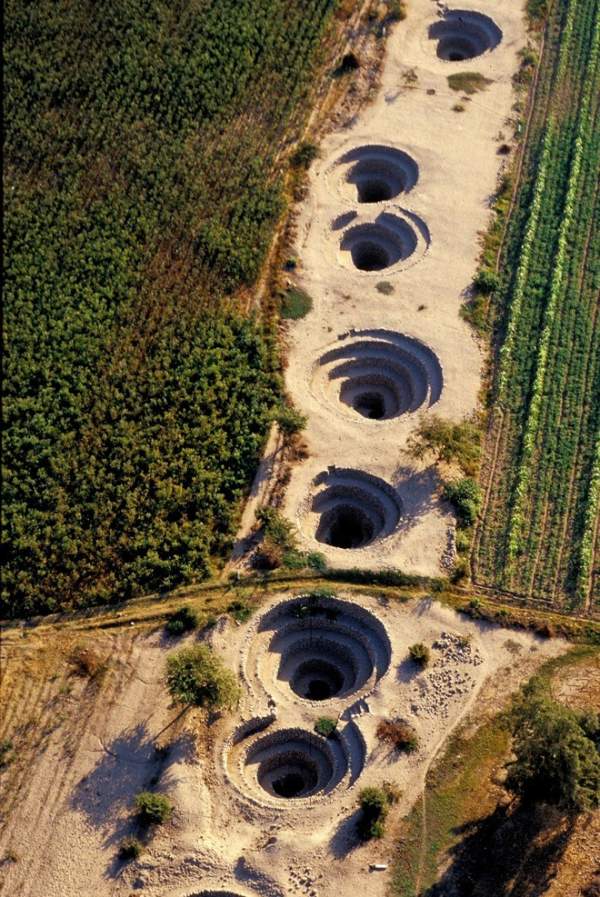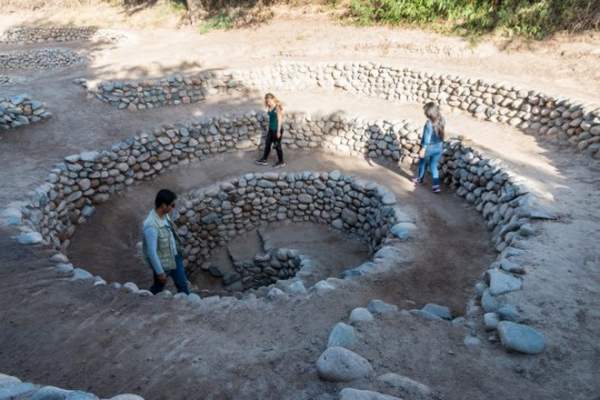
The Cantalloc Aqueducts is one of the most outstanding irrigation engineering works in the world, built in the middle of the desert in Peru by the ancient Nazca culture (AD 200 - 700). Today it is located 4 km west of the city of Nazca, Peru.

Of the 46 underground water pipes found, 32 are still functioning despite being built in the pre-Inca period 1,500 years ago. In some cases, some underground water pipes run for several kilometers at depths up to 12 meters.

Slate and huarango tree trunks were used to construct the entrances to this aqueduct. It is also known as puquios. Along the route of the 35 puquios are spiral-shaped ventilation shafts used to clean, conserve and collect water.
The ancient inhabitants of Nazca sought to obtain groundwater to irrigate arid regions and combat prolonged droughts.
Some of these aqueducts are still used today by local farmers. It is a unique irrigation system in Peru and perhaps the most unique in the world.

Aqueducts provide water to the city of Nazca and its surrounding fields, allowing residents to grow cotton, beans, potatoes and other crops in an arid region. Currently, this relic area attracts a large number of visitors every day.








